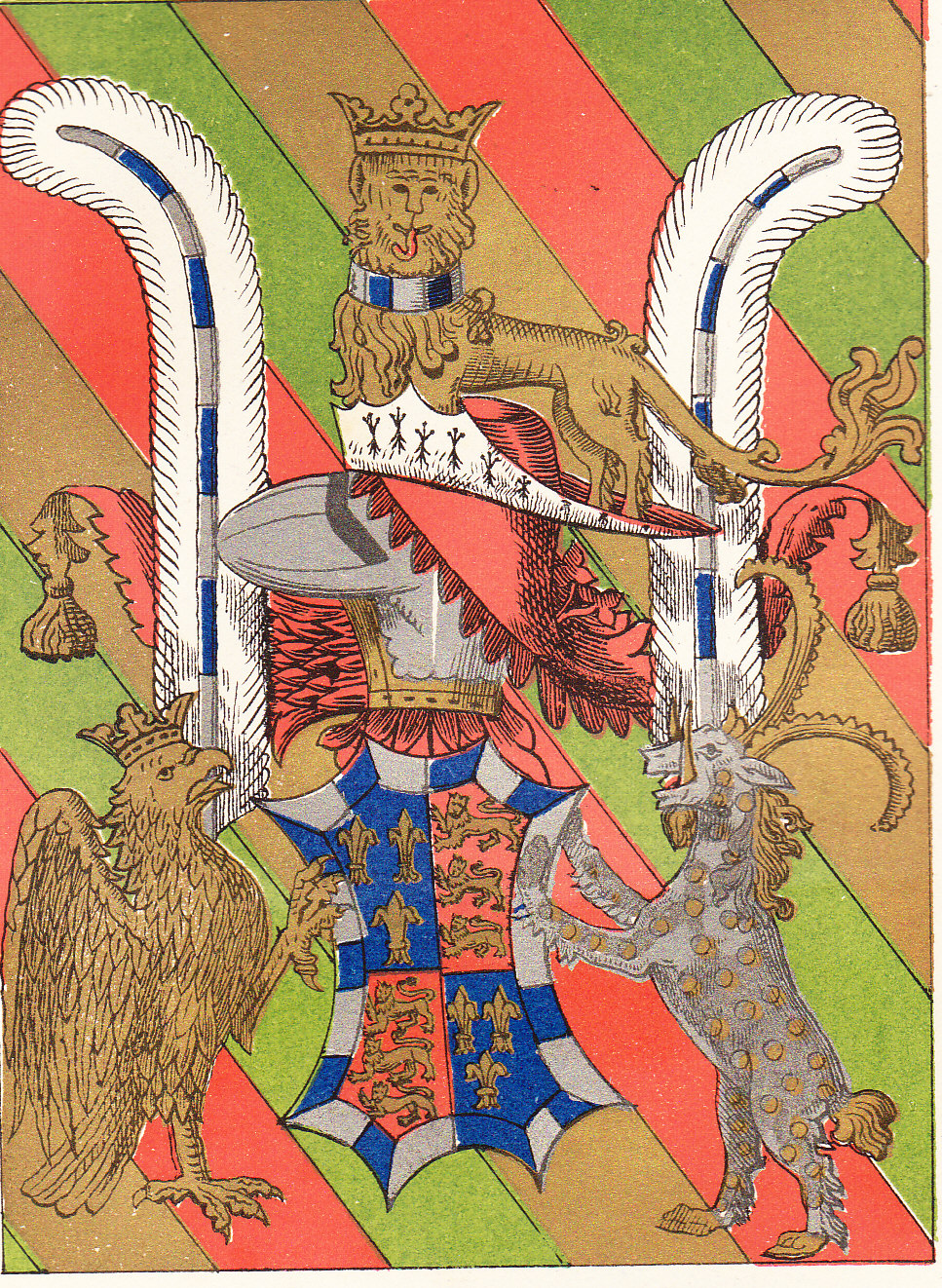Achievement (heraldry) on:
[Wikipedia]
[Google]
[Amazon]
 In
In
 In
In heraldry
Heraldry is a discipline relating to the design, display and study of armorial bearings (known as armory), as well as related disciplines, such as vexillology, together with the study of ceremony, rank and pedigree. Armory, the best-known branch ...
, an achievement, armorial achievement or heraldic achievement (historical: hatchment) is a full display or depiction of all the heraldic components to which the bearer of a coat of arms is entitled. An achievement comprises not only the arms displayed on the escutcheon
Escutcheon may refer to:
* Escutcheon (heraldry), a shield or shield-shaped emblem, displaying a coat of arms
* Escutcheon (furniture), a metal plate that surrounds a keyhole or lock cylinder on a door
* (in medicine) the distribution of pubic ha ...
, the central element, but also the following elements surrounding it:
* Crest placed atop a:
* Torse (or Cap of Maintenance as a special honour)
* Mantling
* Helm
Helm may refer to:
Common meanings
* a ship's steering mechanism; see tiller and ship's wheel
* another term for helmsman
* an archaic term for a helmet, used as armor
Arts and entertainment
* Matt Helm, a character created by Donald Hamilt ...
of appropriate variety; if holder of higher rank than a baronet, issuing from a:
* Coronet or Crown (not used by baronets), of appropriate variety.
* Supporters
In heraldry, supporters, sometimes referred to as ''attendants'', are figures or objects usually placed on either side of the Escutcheon (heraldry), shield and depicted holding it up.
Early forms of supporters are found in medieval seals. H ...
(if the bearer is entitled to them, generally in modern usage not baronets), which may stand on a Compartment
* Motto, if possessed
* Order
Order, ORDER or Orders may refer to:
* Categorization,